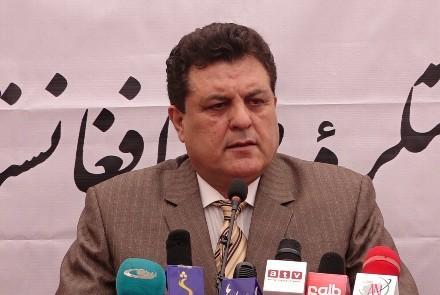Critics: New Categories on Afghan IDs Will Incite Ethnic Tension

Strong reactions from public figures continue to grow following a decision by the National Statistics and Information Authority (NSIA) to add 54 new ethnic designations to the already existing 14 ethnic groups used on the electronic national identity cards.
Critics are saying that the additions will fuel division among Afghans at this critical juncture in the nation’s history.
The NSIA on Monday said they were open to reconsidering the additions if they were ordered to do so, but officials have said that their decision has not changed so far.
The 54 ethnic group designations were added to the NSIA website that is used for online applications for the national identity cards.
Abdul Latif Pedram, the head of the National Congress Party of Afghanistan, said that the move by the NSIA will further fuel ethnic tensions in Afghanistan, and he urged a swift halt to the process.
According to Pedram, some of the “ethnicities” on the cards are geographical locations, and they are not legitimate.
Pedram said that the government by adopting such an approach is attempting to remove identities.
“Even some geographies were given the name of an ethnicity,” said Pedram.
Meanwhile, in the northern provinces of Balkh and Parwan, residents in separate meetings condemned the move by the NSIA and said that this will bring discord among the Afghan people.
“They divide our people, this is not acceptable to us,” said Aminullah Shakori, the head of the Parwan provincial council.
“The move by the government will soon be met by public protests,” said Rohullah Sangar, a civil society activist in Parwan.
“The enemies of our country made a conspiracy, they want to divide us into little pieces,” said Aassadullah Azimi, the deputy head of Hizb-e-Wahdat-e-Islami Nawin Party.
“We are not a political entity, this decision has been based on the demands of the tribes and based on the provisions of the law,” said Roeena Shahabi, a spokesperson for the NSIA.
Article 4 of the Constitution says that “the nation of Afghanistan shall be comprised of Pashtun, Tajik, Hazara, Uzbek, Turkman, Baluch, Pachaie, Nuristani, Aymaq, Arab, Qirghiz, Qizilbash, Gujur, Brahwui and other tribes.”
However, 54 other ethnic groups have been added, including: Ormar, Barachi, Kurd, Jogi, Shahkhiliyan, Shaikh Mohammadiyan, Kawar, Khalili, Pamiri, Manjani, Sangichi, Ishkashimi, Roshnaee, Wakhani, Shoghnani, Turk, Qarloq, Tatar, Mughul, Sakaee, Dawlat Khani, Taimani, Albeg, Qazaq, Sajani, Qoshkhaniyan, Bayat, Nimaq, Qabchaq, Nikpai, Kohgadari, Daimirk, Mir Sayeda, Jamshidiyan, Afshariyan, Tahiriyan, Saljoqis, Timurids, Barlas-Arlas, Ailkhani, Yaftali, Laqyan, Kawi, Qozi, Abka, Joghtaee, Karaee, Karam Ali, Skhaikh Ali, Orta Balaqi, Uyghur, Baborids and Formuli.
The decision sparked reactions from political parties, activists and citizens.
The NSIA said that the new list for adding the ethnic groups was prepared by the Ministry of Borders and Tribal Affairs.
